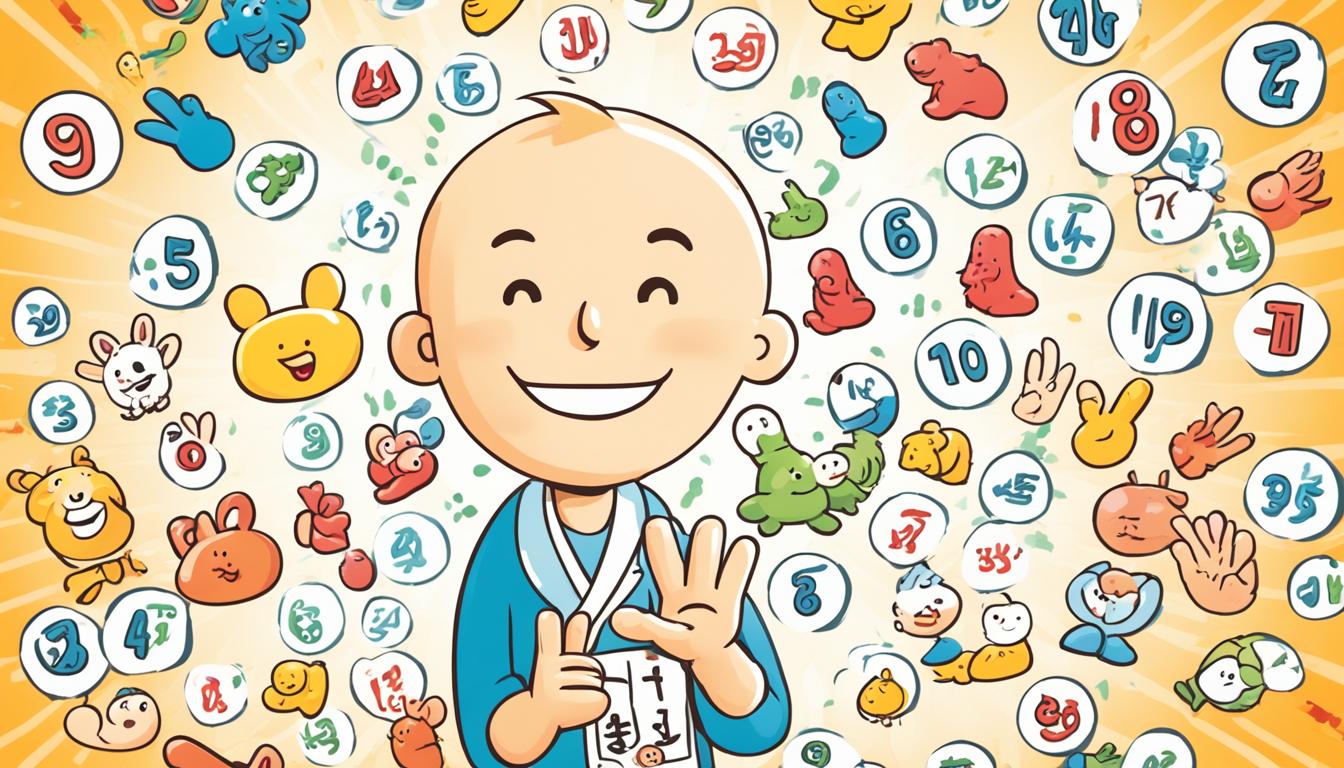Welcome to our beginner’s guide on how to count in Japanese! Whether you’re planning a trip to Japan or simply interested in learning a new language, counting in Japanese is a fundamental skill that can greatly enhance your communication abilities. In this guide, we’ll walk you through the essentials of Japanese counting, providing you with the tools and knowledge to confidently navigate numbers in Japanese.
Counting in Japanese may seem daunting at first, but with a little practice and an understanding of the basic rules, you’ll be able to count with ease. Japanese counting incorporates specific counters, which are words used to count various objects and concepts. These counters can differ based on the shape, size, or category of the item being counted.
In this guide, we’ll cover the essential counters used in daily life, as well as numbers from 1 to 10 and their pronunciation. You’ll also learn how to construct double-digit numbers and discover additional numbers and counting systems in Japanese. Understanding the cultural and contextual usage of counting in Japanese will also be explored.
By the end of this guide, you’ll have a solid foundation in Japanese counting, allowing you to confidently navigate everyday situations that involve numbers. So let’s dive in and start your journey into the fascinating world of counting in Japanese!
Understanding Japanese Counters
Japanese uses counters, known as “josuushi,” to indicate the type of object being counted. Counters are attached to a number and can vary based on the object’s shape, size, or category. Understanding the concept of counters is crucial for accurately counting in Japanese.
For example, the counter “本” (hon) is used for long, thin objects like umbrellas or pens. On the other hand, the counter “枚” (mai) is used for flat objects like paper. Using the appropriate counter for each object is essential to ensure accurate counting in Japanese.
By familiarizing yourself with the most common counters, you’ll be able to count objects more precisely in Japanese. Here are some examples:
| Counter | Usage |
|---|---|
| 本 (hon) | Counting long, thin objects |
| 枚 (mai) | Counting flat objects |
| 人 (nin) | Counting people |
| 匹 (hiki) | Counting small animals |
| 台 (dai) | Counting machines or vehicles |
Remember, using the correct counter adds specificity to your counting in Japanese and enhances your communication skills. Practice using different counters with various objects to become more comfortable and fluent in Japanese counting.
Your Guide to Japanese Counters
If you’re interested in delving deeper into the world of Japanese counters, check out our comprehensive guide that covers a wide range of counters and their applications. From counting animals to counting sheets of paper, this guide will equip you with the knowledge you need to count like a native speaker.
Mastering Japanese Numbers 1-10

To count in Japanese, it is crucial to learn the numbers from 1 to 10. The numbers are represented by the following symbols in Hiragana:
いち (ichi) for one
に (ni) for two
さん (san) for three
四 (shi) or よん (yon) for four
ご (go) for five
ろく (roku) for six
しち (shichi) or なな (nana) for seven
はち (hachi) for eight
きゅう (kyuu) for nine
じゅう (juu) for ten
By memorizing these numbers, you will have a strong foundation for counting in Japanese.
Constructing Double-Digit Numbers in Japanese
In Japanese, double-digit numbers are formed by combining the numbers 1 to 10 with the word for ten (じゅう, juu). This unique pattern allows for easy construction and pronunciation of double-digit numbers in Japanese. Let’s take a look at some examples:
Eleven: じゅういち (juu-ichi)
Twelve: じゅうに (juu-ni)
Thirteen: じゅうさん (juu-san)
Fourteen: じゅうよん (juu-yon)
Fifteen: じゅうご (juu-go)
Sixteen: じゅうろく (juu-roku)
Seventeen: じゅうしち (juu-shichi)
Eighteen: じゅうはち (juu-hachi)
Nineteen: じゅうきゅう (juu-kyuu)
By recognizing and applying this pattern, you can effortlessly construct and pronounce double-digit numbers in Japanese. Practice saying these numbers out loud to enhance your fluency and familiarity with Japanese counting.
Refer to the image above for a visual representation of double-digit numbers in Japanese.
Extended Numbers and Counting in Japanese
After mastering the basics of counting in Japanese, it is essential to learn additional numbers and counting systems. The Japanese numeral system includes words for 100 (hyaku), 1,000 (sen), and 10,000 (man). These numbers can be combined with other numbers to form larger numbers in Japanese. Additionally, counting in Japanese often involves using specific counters for different objects or concepts. These counters can vary based on the shape, size, or category of the item being counted. By familiarizing yourself with these extended numbers and counters, you can expand your ability to count accurately in Japanese.
Tips for Practicing and Mastering Japanese Counting
To become proficient in counting in Japanese, it is important to practice regularly. Start by using the common counters introduced in this guide and try counting different objects in your daily life. Pay attention to the shape, size, or category of the object and use the appropriate counter. If you’re unsure which counter to use, don’t hesitate to ask for help.
With time and practice, counting in Japanese will become more natural and intuitive. One tip to keep in mind is to be aware of Japanese number superstitions. For example, it is believed that the number 4 is unlucky, so it’s best to avoid using it when counting. Additionally, some numbers have different readings depending on the context, so be mindful of that when counting in Japanese.
By following these tips and dedicating time to practice, you can master the art of counting in Japanese. Remember, consistency is key. Incorporate counting exercises into your daily routine and challenge yourself to count a variety of objects. With perseverance and a bit of patience, you will soon be able to confidently and accurately count in Japanese, enhancing your language skills and cultural understanding.

